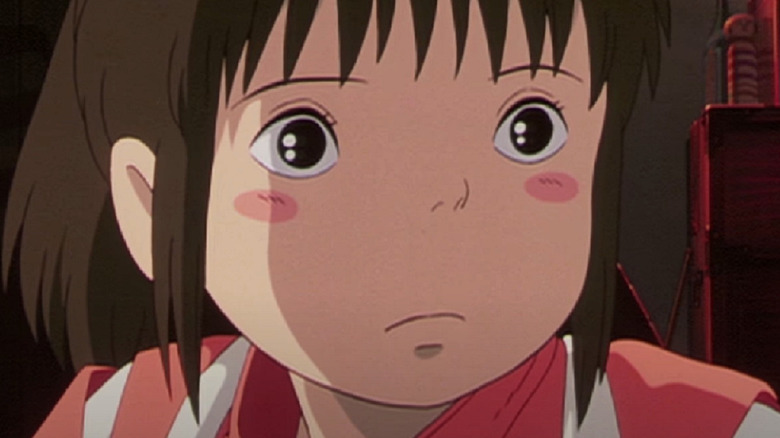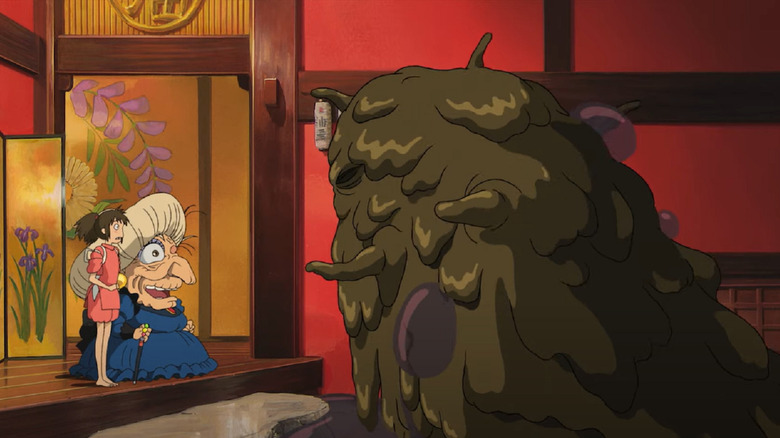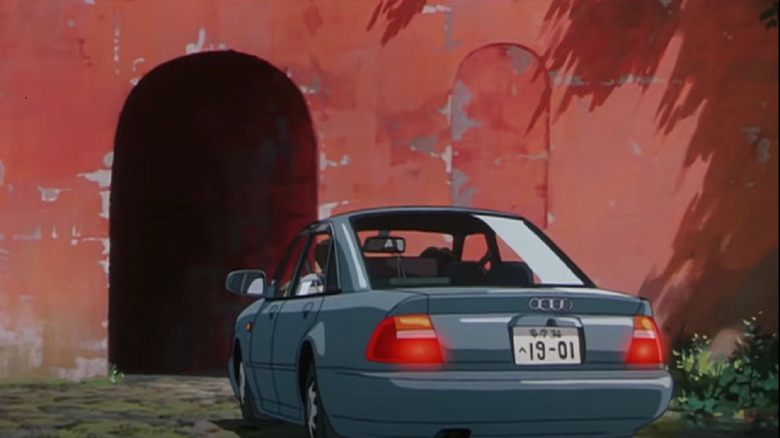The Small Spirited Away Detail That Sparked A Deep Conversation Among Fans
From the boundlessly creative mind of Hayao Miyazaki, Studio Ghibli's "Spirited Away" is an unforgettable two-hour journey to a spirit realm, bizarre and bustling, all told from the perspective of a 10-year-old girl, Chihiro (Rumi Hiiragi). Indeed, it should come as no surprise that this Miyazaki film was an astounding box office success, becoming, as written in "Hayao Miyazaki: Japan's Premier Anime Storyteller" by Jeff Lenburg, "the first Japanese film to earn $200 million internationally [...] before opening in the United States."
But as rich in detail and thematically resonating as it is — some anime fans even consider it the best animated film ever made — "Spirited Away" may not be without any flaws.
Even the most seemingly perfect films can be subjected to one or two small hiccups that may be spotted after more than one viewing, when one is more fully concentrated on what's happening on the screen. For one reason or another, continuity mistakes can happen and make it to the final cut without being spotted or amended. Some fans have picked out one detail that changes from the beginning to when it is seen again at the end of the movie. But is it a continuity mistake, or something purposeful?
Mistake or intentional?
A fan who goes by u/RowKiwi on Reddit posted an image comparing the tunnel which connects the human and spirit worlds at the start and at the end of the movie, asking "Any explanation yet?"
At the start of the animated feature, the entrance to the tunnel looks relatively clean, one can even make out the reddish tint to the wall, whereas at the end, the entrance is covered in foliage and moss, the grass being so outgrown that it hides the pathway into the tunnel.
However, we should not be quick to assume this to be a simple mistake. Fans on Reddit had their own opinions, some more believable than others. One user, u/sylvanwhisper, suggested that the tunnel's cleaner appearance at the beginning served to incentivize Chihiro's family to traverse it: "I always took it to mean the building appeared new in the beginning to lure them in. Her dad saw an open, new structure, when, in reality, it looked like the second picture all along." Touching upon a similar point, specifically the grinning statue standing in front of the tunnel's entrance, Dani Cavallaro writes in "The Late Works of Hayao Miyazaki" "The ancient stone statue beheld by the heroine with apprehension at this vital turning point in the drama [...] The creature's grimace appears both to mock the humans who are about to invade the realm whence its ilk originates, and to egg them towards mysterious challenges."
The passing of time
But two theories rise above the others as the most believable, according to cultural Taoist and Shinto influences which are known to be present in Miyazaki's films. The first theory explains the differences as stemming from the fact that the entrance at the end is how it really appears to people in the real world, whereas at the beginning it is the true entrance to the spirit world — or, in other words, Chihiro no longer had a way to go back to Haku's (Miyu Irino) world even if she wanted to.
The last theory is also backed by cultural influences. On the same thread, u/LightFu86, commented about the possibility of the passage of time differing in the real world from the spirit world. To illustrate their point, they summarized a story about a logger who, after entering a cave where two gods resided, he came out to find that 100 years had gone by. "Eastern [Asian mythology] believes that the gods experience much slower timing than ordinary persons and that's why they are eternal," they wrote. If this is true, it would mean that even though it had only been a couple of days in the spirit world when Chihiro and her parents returned, an indeterminate but longer amount of time had passed in their world.
As there are no right answers, only guesses, the truth can be whatever makes the ending feel more meaningful to each fan.


